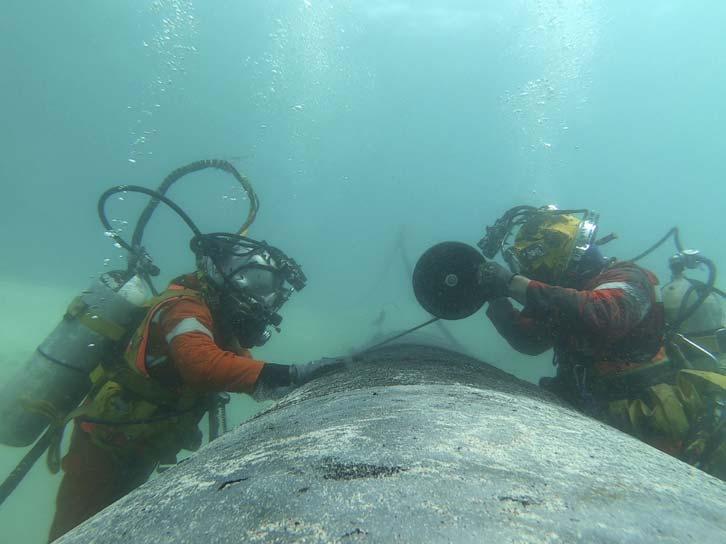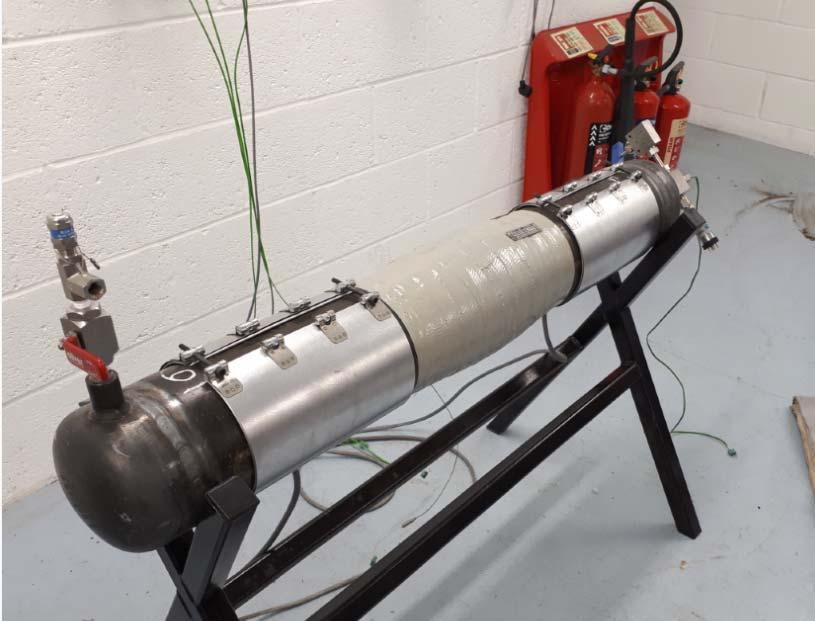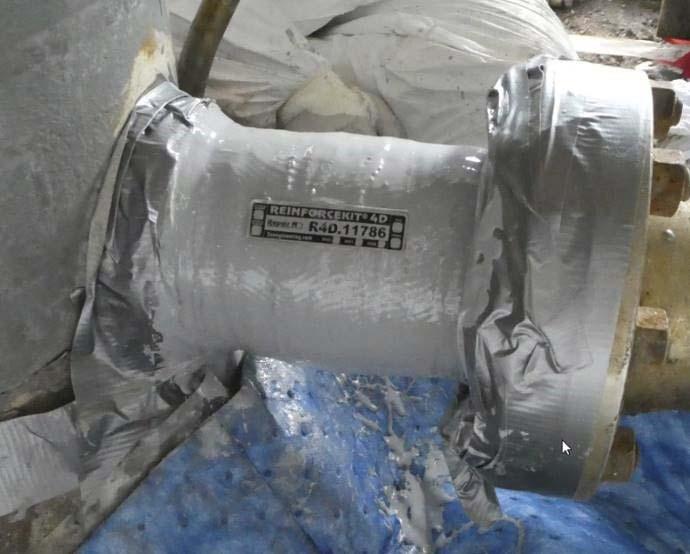
5 minute read
Composite wrap vaccine
COMPOSITE COMPOSITE WRAP WRAP VACCINE VACCINE





Jean-François Ribet, 3X ENGINEERING, Monaco,
shows how composite wrapping was used to repair a topside line experiencing damaging internal corrosion on a North Sea platform.

Ageing offshore platforms face numerous problems with their topside lines today. Due to the harsh offshore conditions, external and internal corrosion are common problems. In addition, due to normal (and sometimes inadvertent) operations, they are also subjected to dents and cracks, which are other types of defects identified in oil and gas operations. In the worst case scenario, these may lead to through wall defects and associated loss of primary containment, generating serious safety and environmental issues.


Despite these issues – which can be critical – the platforms need to produce continuously, and shutdown is rarely an option; if it must happen it can only be for a very short time according to the pipes and to their functions. 3X ENGINEERING (3X) specialises in maintenance solutions for the oil and gas industry, including leak sealing systems, anti-corrosion products and composite repairs to restore pipe integrity and for structural matters.
REINFORCEKiT® 4D (R4D) is a permanent composite repair system for pipelines and piping experiencing corrosion-related defects and mechanical damage. Made of an epoxy resin and bi-directional woven high-strength Kevlar® aramid-fibre material, the system is a non-metallic technical alternative to metal clamps, welded sleeves and pipe replacement. Thoroughly tested by third-party laboratories, it can restore pipe integrity in compliance with applicable standards such as ISO 24.817 and ASME PCC-2.
R4D composite is applicable in environments ranging from onshore transmission pipelines and refinery piping to offshore piping, risers and even sealines. The company has over 30 years of experience in composite repair for pipe and pipework repairs, with a particular focus on subsea composite repair. Several R&D projects intended to expand the limits of composite repair are ongoing, such as online leak sealing, high-temperature solutions or deep subsea repair.

Figure 1. R4D composite repair wrapping in subsea environment.
Figure 2. Energy release rate – qualification of R4D system at high temperature.


Figure 3. Hole defect overview.
Case study
3X and its partner in the North Sea were asked to repair a pipe on an offshore platform that had a substantial hole due to internal corrosion. The damaged area was located on a 4 in. pipe near a flange.
The challenge was to implement a solution that took into consideration the harsh environment, the damaged state of the old pipe section and the considerable size of the hole. It was thus decided to install R4D to seal the leakage and reinforce the damaged area. A condition of the intervention was to install the composite repair at an ambient temperature (during shutdown of the line), which was more or less 20˚C; after the repair, the line would operate again at 70˚C.
A defect assessment was provided and calculations using the company’s REA software program made it possible to propose a technical offer and a repair design that complied with the ISO 24.817 standard. Once the go-ahead was given by the client, the job could start.
A surface preparation was made in order to achieve a good surface state and surface profile. This preparation made it possible to remove rust and obtain a sufficient roughness to ensure good bonding between the steel and the composite. It was performed with a Bristle Blaster® machine.
A roughness test surface profile evaluation was carried out to check the quality of the blasting. A test was conducted across different locations of the pipe. Using a roughness comparator, it was established by 3X that the roughness was acceptable and superior to 60 µm.
Before applying the resin, it was important to make sure that the hygrometric conditions were satisfying. Tests were carried out using a calibrated hygrometer.
The company’s requirements, in terms of climatic conditions, are: Dew point at least 3˚C below the pipe surface temperature (∆T>3˚C). Moisture lower than 85% relative humidity (RH). Surface temperature superior to 10˚C.
The whole prepared surface was then cleaned with acetone and white rags in order to remove any residual contaminants, such as dust or grease, from the carbon steel substrate.

The first step of the proper repair was to apply the filler with a plate to cover the hole for leak sealing purposes. The filler was selected according to its high mechanical properties and chemical resistance.
The second step was the application of the chemical-resistant epoxy resin on the prepared surface to transfer the loading from the piping to the composite sleeve.
The third step was the application of the Kevlar roll on the wet surface. It was wrapped helicoidally around the straight pipe with 50% covering with continuous tape impregnation. The wrapping on the straight part started from one edge with a turnaround for the first lap to prevent any sliding of the tape. After that, the tape was shifted to obtain a 50% overlap of the previous layer. The wrapping job was made by applying a regular tensile strength. When the pipe was fully covered by the impregnated tape, the first pass was achieved. The wrapping had to be continued to the other sides and so on and so forth.
Once the tape was positioned on the pipe, it was immediately impregnated with 3X resin and wrapping continued.
The final step was to apply a final layer of resin all over the repair to ensure good wetting of the fibres and give a good surface aspect. To finalise the repair, an identification plate was applied on the composite, enabling traceability of the repair. Eventually the curing was followed up by hardness (shore D)
Figure 4. Repair overview with ID plate installed for traceability. testing and a job report was issued to the end user for their records.
Conclusion
Despite the striking features of the defect, it was repaired successfully. The company can now also perform hole repair online through its FIXOKiT® engineering solution.











